Laser selection
Selection of the laser wavelength is important for obtaining meaningful Raman data. The excitation wavelength can be selected from the UV though the visible to the near IR regions, with a range of power options depending on the application. Multiple lasers with a variety of wavelengths can often be installed in a Raman microscope to allow data to be measured for different types of samples. A popular laser wavelength is 532 nm because it offers a relatively high Raman excitation energy and a low fluorescence intensity.
However, for a greater reduction in fluorescence, lasers with longer wavelengths such as 785 nm and 1064 nm are often used. Less frequently required UV lasers offer the additional benefit of “resonance Raman”, an excellent choice for carbonaceous materials.
Fig. 7 Laser selection for Raman spectroscopy
Fluorescence
Fluorescence can be a side effect in Raman measurements, and can originate from either the target molecules or the surrounding matrix. Care must be taken if the sample is contained in a vial or tube as this can also cause background interference. There are two physical methods for reducing fluorescence. The first is to select a laser wavelength at which fluorescence does not occur. This is typically a longer wavelength where there is insufficient energy for electron excitation. The second method is to choose the aperture size and shape to mask as much of the sample matrix as possible to eliminate matrix fluorescence – this is improved with dual spatial filtration (DSF) included with NRS-5000/7000 spectrophotometers. A third option is the use of a fluorescence rejection algorithm (patented), which is highly effective at removing the broader fluorescence spectrum, leaving the sharper Raman peaks with a clean baseline, as shown below. This feature can be used either automatically during measurement for fast imaging, or post-acquisition for additional data processing. This often works well for samples with strong fluorescence when using shorter-wavelength lasers (such as 405 or 457nm), which produce a more intense Raman signal.
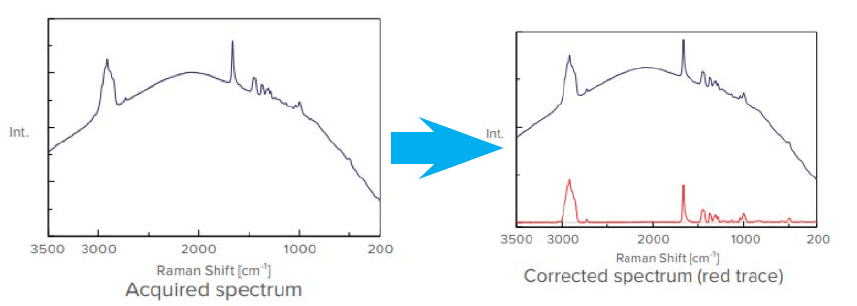
Fig. 8 Fluorescence correction can be performed during or post acquisition
Spectral resolution
The spectral resolution in a Raman microscope system is defined by several factors - the focal length of the spectrograph, the number of lines on the grating and the resolution of the elements in the detector. The focal length is the distance between the focusing mirror and the detector, with a longer focal length providing higher resolution. The grating is an optical component that consists of periodic grooves at a specific angle (blaze angle) to match the wavelength of the excitation laser. The resolution increases with increasing number of grooves. The specification is typically described by the number of lines or grooves per millimeter on the surface (a common grating is 900 gr/mm) and the blaze wavelength. Due to physical limitations, is not possible to indefinitely increase the number of grooves to increase the spectral resolution. Light striking the grating surface is dispersed following the Huygens–Fresnel principle. The final factor that influences spectral resolution is the pixel size in the CCD detector, with smaller pixels leading to higher spectral resolution.
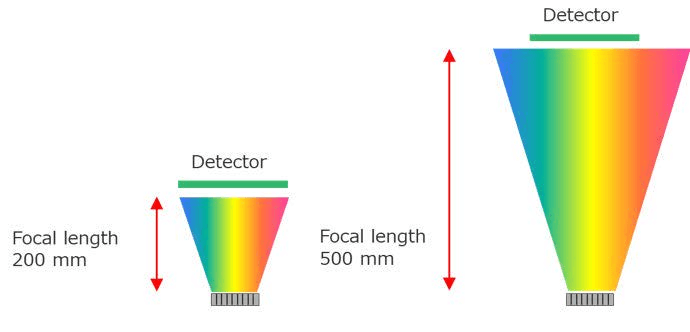
Fig. 9 Schematic showing dependence of dispersion on focal length
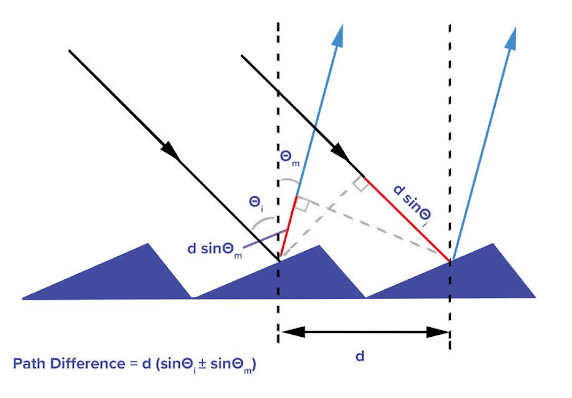
Fig. 10 Angular dispersion
CCD detector
A charge coupled device (CCD) is the most commonly used detector in Raman microscopy. It is a highly sensitive photon detector, and an image is constructed from the signals collected from the pixels, which are discrete small sensitive regions on the detector surface. Smaller pixels offer higher spectral resolution, but this has to be weighed against slightly reduced sensitivity. Electron multiplied detectors (EMCCD) are also used and offer sensitivity at up to 50 times that of conventional CCD detectors. For measurements in the near IR region, CCD detectors are not sufficiently sensitive, so that InGaAs array detectors are used instead.
Spatial resolution
In Raman microscopy, spatial resolution is extremely important to allow discrimination of small structural differences in a sample. Optical microscope objective lenses (up to x100 magnification) are used to observe the sample and pass the scattered Raman light to the spectrograph. This means that many of the factors and techniques that affect light microscopy can be applied to Raman microscopy. Spatial resolution is constrained by the resolving power of the objective lens. When light with a constant energy distribution is introduced into the objective lens, a diffraction pattern as shown in Fig. 11 occurs. The bright central area is called the Airy disk, and its diameter (d) can be determined from the wavelength (l) and the numerical aperture (N.A.) (see the equation in Fig. 11). The “d” term refers to the diffraction limit that determines the spatial resolution of an optical lens.
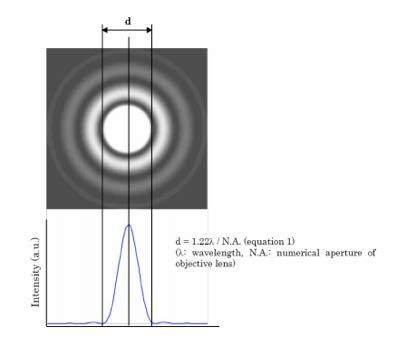
Fig. 11 Airy-disk resulting from diffraction with a circular aperture
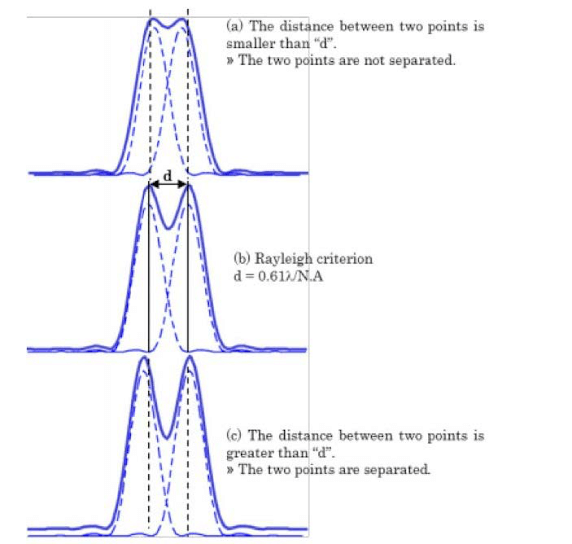 Fig. 12 Spatial resolution defined by the Rayleigh criterion
Fig. 12 Spatial resolution defined by the Rayleigh criterion
The definition of spatial resolution (Rayleigh criterion, Fig. 12)in the XY plane is based on the distance between two points close to each other that can be distinguished. In the standard configuration of an NRS-5000/7000 (532 nm laser, with a x100 objective lens with N.A. = 0.90), the laser spot size at the diffraction limit is calculated as d = 720 nm. The spatial resolution, according to the Rayleigh criterion, is then equal to 360 nm.
As the equation in Fig. 11 suggests, if the laser wavelength is decreased, the spatial resolution then increases. Additionally, if an oil-immersion objective lens providing a larger N.A. is used, an improvement in spatial resolution can be achieved.
However, the definition based on FWHM (full width at half maximum) of the intensity of the interference ring also has to be recognized.
Confocal optics
The spot size in laser Raman microscopy is typically less than 1 μm. The optimized confocal design of the NRS- 5000/7000 includes an additional feature - dual spatial filtration (DSF), making it possible to achieve a maximum spatial resolution. DSF eliminates stray light that is not removed at the first aperture and significantly improves the resolution along the Z axis (Fig. 7).
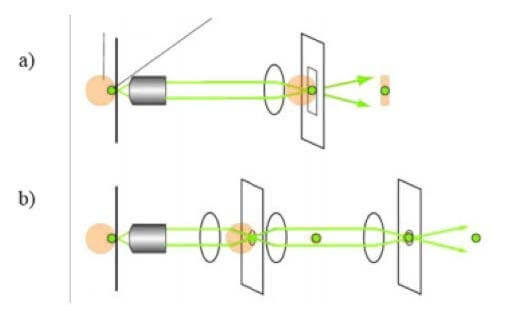
Fig. 13 a) Standard confocal optics with pinhole aperture; b) JASCO DSF(Dual Spatial Filtration) confocal optics
Related Posts:
 Avoiding Interference from Fluorescence Signal by…
Avoiding Interference from Fluorescence Signal by… Analysis of pollen collected by Durham sampler…
Analysis of pollen collected by Durham sampler…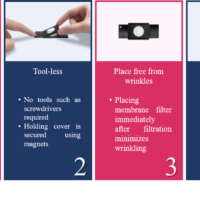 Introduction of New and Improved Sample Holder for…
Introduction of New and Improved Sample Holder for…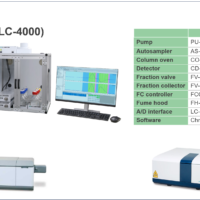 Structural Analysis of Chiral Samples with Multiple…
Structural Analysis of Chiral Samples with Multiple…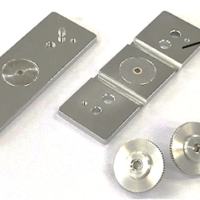 Use of Diamond Compression Cell for Different Sample Types
Use of Diamond Compression Cell for Different Sample Types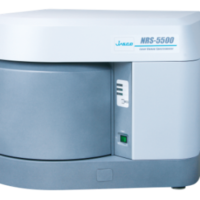 Fluorescence Observation and Foreign Materials…
Fluorescence Observation and Foreign Materials…
